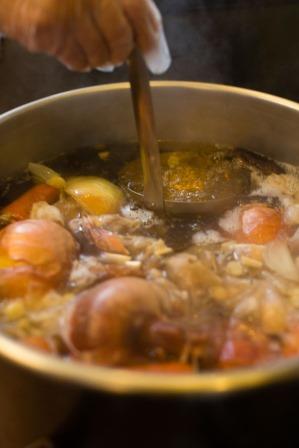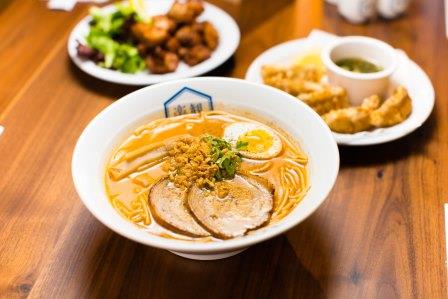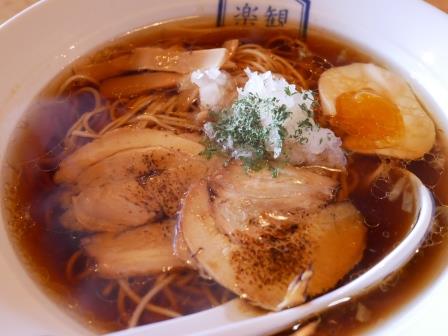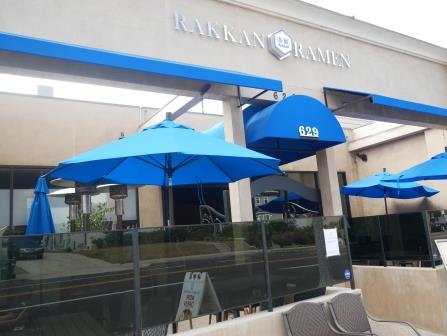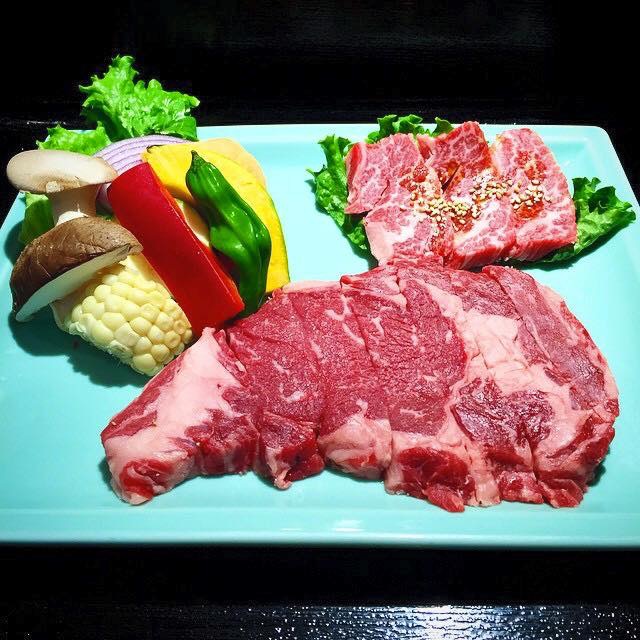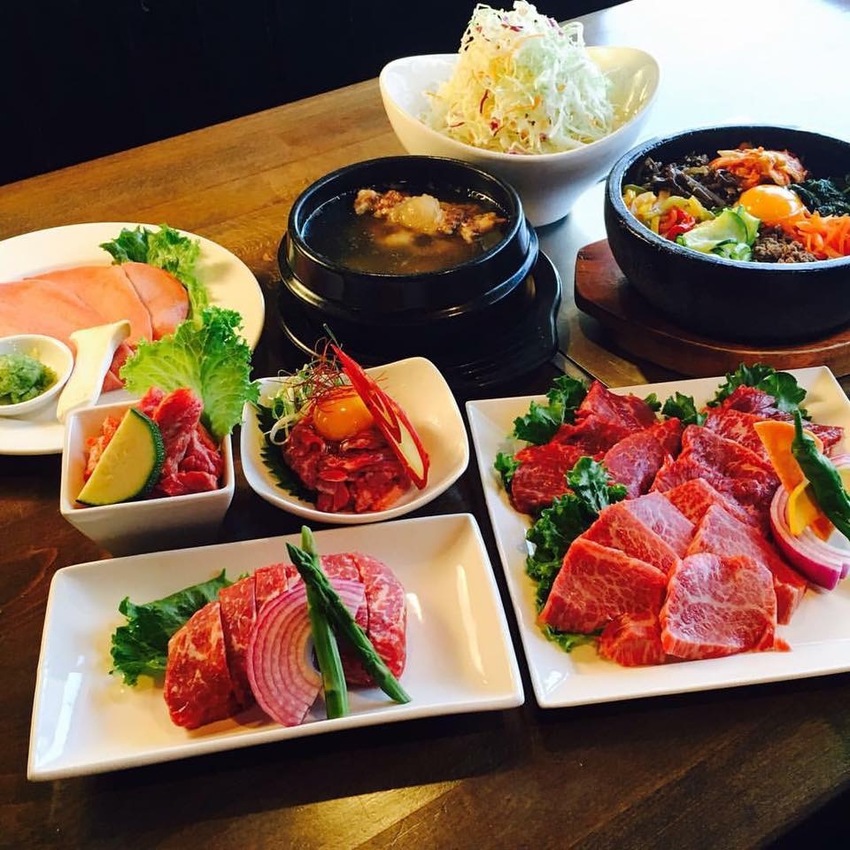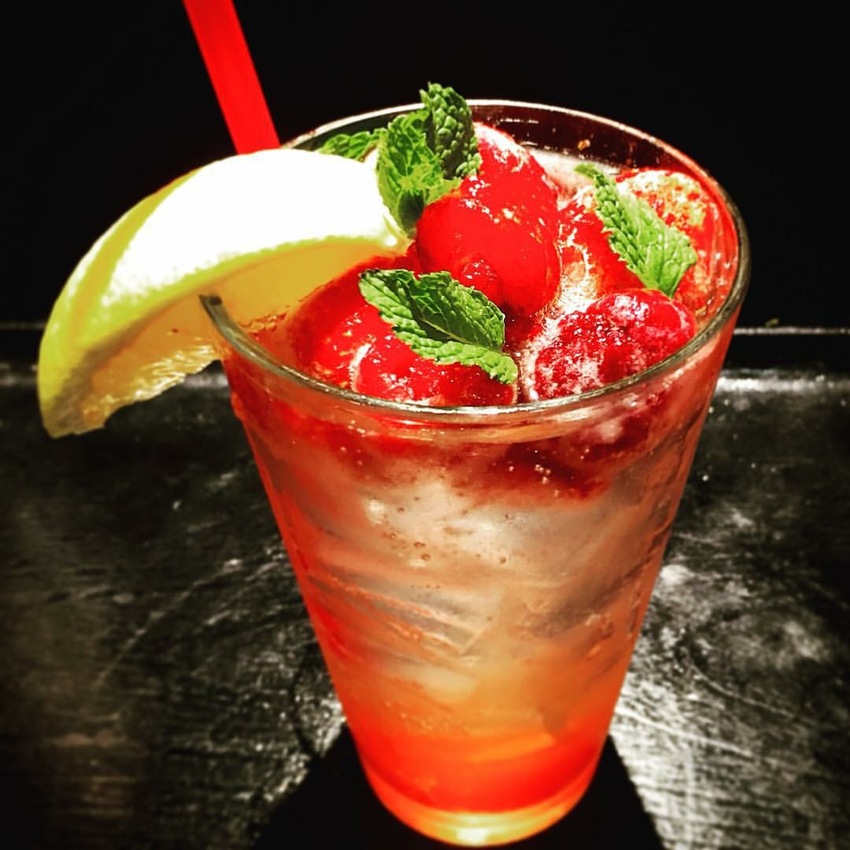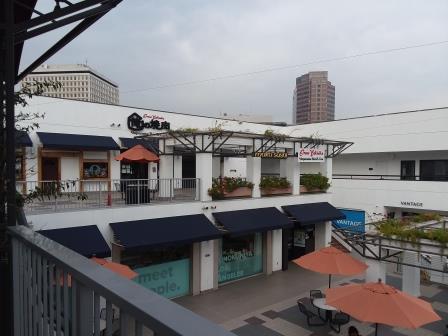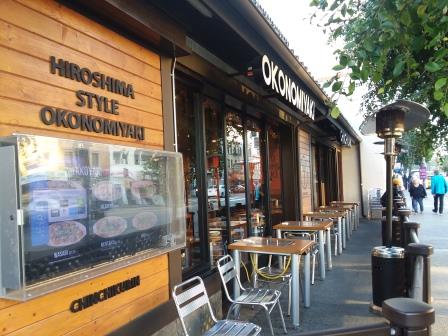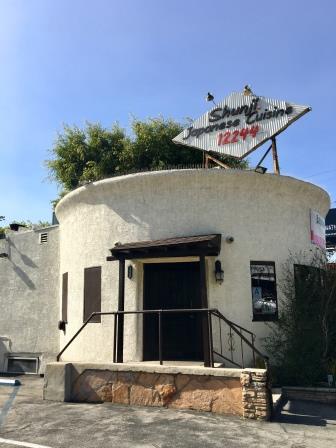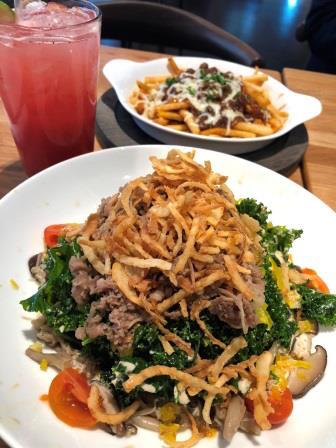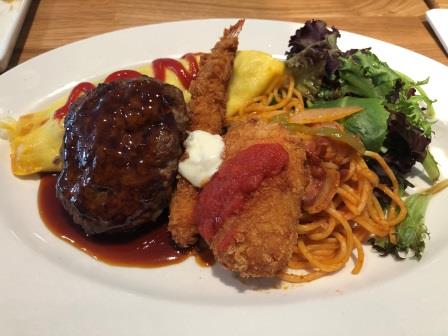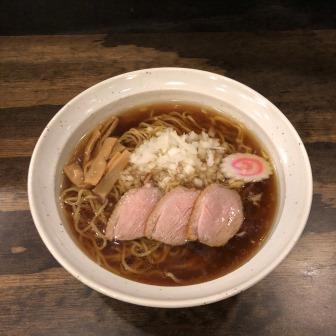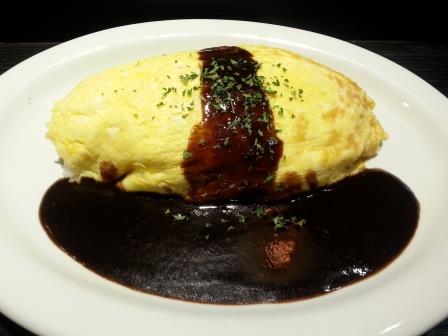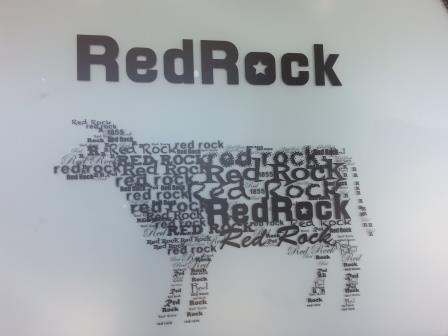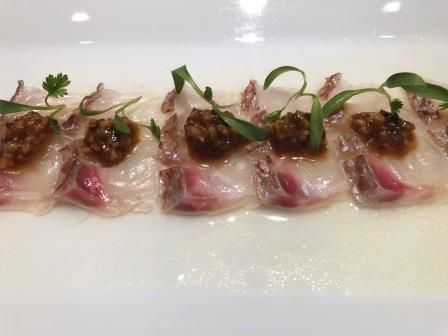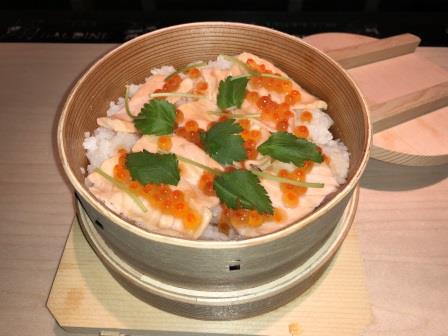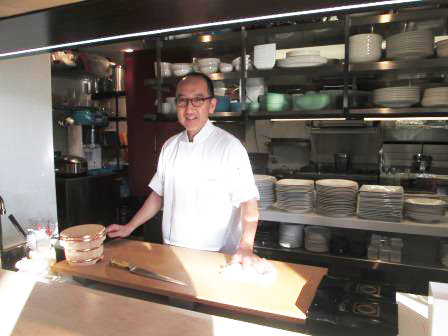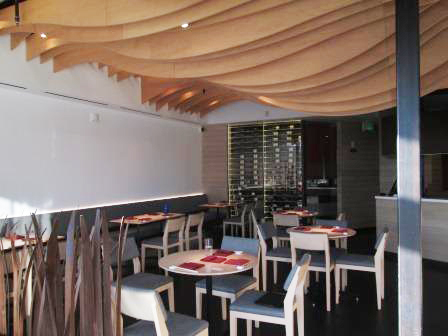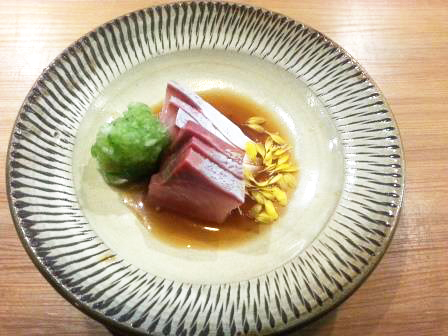Expanding quickly to 3 locations in the LA area, a ramen restaurant chain from Tokyo, Rakkan Ramen
By Keiko Fukuda
I don’t know why, but in the beach cities of the Los Angeles suburbs, there were no ramen restaurants for a long time. It is the area which includes Manhattan Beach, Redondo Beach, and Hermosa Beach. There were several ramen restaurants in nearby cities, Torrance and Gardena, and new establishments were coming to Costa Mesa, Little Tokyo, and Sawtelle, all of which were definitely avoiding the beach cities. However, in early 2019, when I was driving on the Pacific Coast Highway in my local area, Redondo Beach, a banner on the wall of a Japanese restaurant which used to be owned by my acquaintance, caught my eyes. The banner had a photo of a ramen bowl!
I couldn’t wait long, and visited that restaurant the following week. That was Rakkan Ramen. On my first visit, I tried the Amber Ramen in a soy sauce-based mild-tasting soup. On the second visit, I tried the miso-based Spicy Garnet. The soup is rich and flavorful, and the noodles have just the right texture and thinness, and the charshu on top is delicious! Not only that, the place is close to my home. I have nothing to complain about. This find is a “big hit”!
Rakkan Ramen also has a location in Downtown, LA, and recently opened another location in Santa Monica, but I kept going to the Redondo Beach location. When a half year had passed since I started to visit there, I requested to interview them through their website. Their CEO had agreed to do an interview at the Redondo Beach location.
On the interview day, I was shocked about how young the CEO, Mr. Ito looked. He further shocked me by telling me that he was only 24 years old when he opened the very first Rakkan Ramen location 9 years ago in Nishi Azabu in Tokyo. He told me, “I was once a cook on a ship. I took the cooking course in high school, and acquired a cooking license when I graduated from high school. I also liked designing and the arts, so I went to a special school for it. Then I boarded a ship, and worked as a cook. I also did some back-packing travels. I had no experience in the ramen business, but there was an izakaya called “Namihei” on the ship where I was working as a cook, and there, I used to serve ramen at meal breaks for the employees who came from various parts of the world, which was very well received.”
Following Nishi Azabu, Rakkan opened 4 more locations in Tokyo and its suburbs. Despite the confidence he felt, he wanted a further challenge to pursue his dream of running a business overseas, and opened the first American location in Little Tokyo of Downtown, LA in July of 2017. I asked about the difference from Japan. He answered, “First, the soup is non-animal based, although there is charshu on top (lol). Dashi is made with vegetables and kombu. The reason is, I thought that going with vegan would be more widely received in the US.”
Moreover, in order for customers to use the place as an izakaya, they included items that go well with Japanese sake on the menu such as buns (pork buns and vegetable buns) and appetizers to satisfy customers here, which are not found in Japan. They offer 10 different brands of Japanese sake. As for the Redondo Beach location, dinner accounts for 75% of the sales, maybe because there are no business offices nearby, and lunch accounts for only 25%.
“I run 4 locations in Tokyo. There are differences between Japan and the US, and especially in Tokyo; not only the environment, but also the speed of business is different. It took me a long time to deeply observe the market environment in the US, and figure out how to go about it,” says Mr. Ito. In other words, instead of carrying over the successful strategy in Japan, I needed to come up with a new strategy unique to the US. In the end, I could say that it was a wise decision, although it took time to achieve.”
I asked Mr. Ito about the future prospects. He said without hesitation, “I will push franchising.” With the acquired license to allow franchising in the US, he is planning to aggressively participate in expositions in Chicago in September, Houston in October, Paris in 2020, and London. Mr. Ito says, “I think that is the best way to spread the Rakkan brand.” I was curious to know where the name, Rakkan, came from. He said, “After traveling the world, I wanted Japanese people to feel more optimistic.”
LA地域に3店舗と急成長中東京から進出したラーメン店
なぜだか分からないが、長い間、私が暮らすロサンゼルス近郊のビーチシティーにはラーメン店がなかった。マンハッタンビーチ、レドンドビーチ、ハモサビーチが含まれるエリアだ。隣接するトーランスやガーデナにはいくつもラーメン店があり、新規の店も、コスタメサ、リトルトーキョー、ソーテルと、見事にビーチシティーを避けるような場所を選んでいた。しかし、2019年の頭、地元のレドンドビーチのパシフィックコーストハイウェイを車で通っていた時に、以前は知り合いがオーナーだった日本食店の建物の壁面のバナーが目に飛び込んできた。そのバナーにはラーメンの写真。
翌週、私は早速、その楽観ラーメンを訪れた。初回は醤油ベースのスープが優しい味のAmberラーメンを、2回目は味噌ベースのSpicy Garnetを注文した。スープのコク、程よい硬さと細さの麺、そして上に乗ったチャーシューまでが美味しく、さらに家から近いとあれば申し分がない。「当たり」だった。
楽観ラーメンは他にダウンタウン店もあり、サンタモニカにも最近店を開けたばかり。しかし、私はレドンドビーチ店に通い続けた。そして、通い始めて半年後、ウェブサイト経由で取材を申し込むとレドンドビーチ店でCEOがインタビューに協力してくれることになった。
当日、伊東CEOの若さに驚いた。話を聞いて、さらに驚いたのは、楽観ラーメン1号店を、9年前に西麻布に開けた当時、伊東さんはまだ24歳だったということ。「もともと船のコックだったんです。高校の調理科出身で、調理師免許は高校卒業時に取得しました。さらにデザインやアートが好きだったので専門学校に通い、その後、世界中を巡る船に乗り込んでコックをやったり、バックパッカーとして旅をしたり。ラーメンの経験はなかったんですけど、働いていた船の中に『波平』という名前の居酒屋があって、そこでの賄いに色々な国の人を相手にラーメンを出したところ、すごく好評だったんです」。
西麻布店に続き、東京都内と近郊に全部で4店舗を展開した。手応えは感じていたが、「海外でビジネスをやりたい」という夢を叶えるため、2017年7月にロサンゼルスのリトルトーキョー(ダウンタウン)にアメリカ1号店をオープンした。日本との違いを聞くと「まずスープが動物系ではないことです。チャーシューは乗っていますけど(笑)、野菜や昆布で出汁をとっています。アメリカで広く受け入れられるためにはビーガンで行くべきだと思ったことが理由です」。
また、居酒屋として利用してもらうために、日本にはないバンズ(ポークバンズとベジタブルバンズ)やアペタイザーなどの酒のつまみになるメニューも充実させた。日本酒も10種類揃えている。ちなみにレドンドビーチ店の場合、近くにオフィスがないからか、売上のうちの75%をディナータイムが占め、ランチは25%に留まっているということだ。
「東京で4店舗経営していますが、アメリカと日本、特に東京では、環境はもちろん、ビジネスのスピードが違います。どのような市場環境かをしっかり観察して、それに合った対策を施すのにアメリカでは時間がかかりましたね」と伊東さんは話す。つまり、日本での成功戦略を踏襲するのではなく、アメリカならではの戦略を新たに立てることが、時間がかかったとしても結果的には賢明だということなのだろう。
今後の展開について質問すると、「フランチャイズを進めていくことです」と即答した。アメリカでフランチャイズを販売する資格を手に、9月のシカゴ、10月のヒューストン、さらには2020年のパリやロンドンと、エキスポに積極的に出展する計画だそうだ。「楽観というブランドを広めるにはそれが一番の方法だと思っています」と語る伊東さん。気になる店名の由来について聞くと、「世界を回って、日本人にもっと楽観的になってほしいなと思ったからです」と答えた。
Rakkan Ramen
629 S Pacific Coast Hwy
Redondo Beach, CA 90277
(310) 543-0586
https://rakkanusa.com/
Sun.-Thu.
11:00am-11:00pm
Fri. & Sat.
11:00am-12:00am
I don’t know why, but in the beach cities of the Los Angeles suburbs, there were no ramen restaurants for a long time. It is the area which includes Manhattan Beach, Redondo Beach, and Hermosa Beach. There were several ramen restaurants in nearby cities, Torrance and Gardena, and new establishments were coming to Costa Mesa, Little Tokyo, and Sawtelle, all of which were definitely avoiding the beach cities. However, in early 2019, when I was driving on the Pacific Coast Highway in my local area, Redondo Beach, a banner on the wall of a Japanese restaurant which used to be owned by my acquaintance, caught my eyes. The banner had a photo of a ramen bowl!
I couldn’t wait long, and visited that restaurant the following week. That was Rakkan Ramen. On my first visit, I tried the Amber Ramen in a soy sauce-based mild-tasting soup. On the second visit, I tried the miso-based Spicy Garnet. The soup is rich and flavorful, and the noodles have just the right texture and thinness, and the charshu on top is delicious! Not only that, the place is close to my home. I have nothing to complain about. This find is a “big hit”!
Rakkan Ramen also has a location in Downtown, LA, and recently opened another location in Santa Monica, but I kept going to the Redondo Beach location. When a half year had passed since I started to visit there, I requested to interview them through their website. Their CEO had agreed to do an interview at the Redondo Beach location.
On the interview day, I was shocked about how young the CEO, Mr. Ito looked. He further shocked me by telling me that he was only 24 years old when he opened the very first Rakkan Ramen location 9 years ago in Nishi Azabu in Tokyo. He told me, “I was once a cook on a ship. I took the cooking course in high school, and acquired a cooking license when I graduated from high school. I also liked designing and the arts, so I went to a special school for it. Then I boarded a ship, and worked as a cook. I also did some back-packing travels. I had no experience in the ramen business, but there was an izakaya called “Namihei” on the ship where I was working as a cook, and there, I used to serve ramen at meal breaks for the employees who came from various parts of the world, which was very well received.”
Following Nishi Azabu, Rakkan opened 4 more locations in Tokyo and its suburbs. Despite the confidence he felt, he wanted a further challenge to pursue his dream of running a business overseas, and opened the first American location in Little Tokyo of Downtown, LA in July of 2017. I asked about the difference from Japan. He answered, “First, the soup is non-animal based, although there is charshu on top (lol). Dashi is made with vegetables and kombu. The reason is, I thought that going with vegan would be more widely received in the US.”
Moreover, in order for customers to use the place as an izakaya, they included items that go well with Japanese sake on the menu such as buns (pork buns and vegetable buns) and appetizers to satisfy customers here, which are not found in Japan. They offer 10 different brands of Japanese sake. As for the Redondo Beach location, dinner accounts for 75% of the sales, maybe because there are no business offices nearby, and lunch accounts for only 25%.
“I run 4 locations in Tokyo. There are differences between Japan and the US, and especially in Tokyo; not only the environment, but also the speed of business is different. It took me a long time to deeply observe the market environment in the US, and figure out how to go about it,” says Mr. Ito. In other words, instead of carrying over the successful strategy in Japan, I needed to come up with a new strategy unique to the US. In the end, I could say that it was a wise decision, although it took time to achieve.”
I asked Mr. Ito about the future prospects. He said without hesitation, “I will push franchising.” With the acquired license to allow franchising in the US, he is planning to aggressively participate in expositions in Chicago in September, Houston in October, Paris in 2020, and London. Mr. Ito says, “I think that is the best way to spread the Rakkan brand.” I was curious to know where the name, Rakkan, came from. He said, “After traveling the world, I wanted Japanese people to feel more optimistic.”
LA地域に3店舗と急成長中東京から進出したラーメン店
なぜだか分からないが、長い間、私が暮らすロサンゼルス近郊のビーチシティーにはラーメン店がなかった。マンハッタンビーチ、レドンドビーチ、ハモサビーチが含まれるエリアだ。隣接するトーランスやガーデナにはいくつもラーメン店があり、新規の店も、コスタメサ、リトルトーキョー、ソーテルと、見事にビーチシティーを避けるような場所を選んでいた。しかし、2019年の頭、地元のレドンドビーチのパシフィックコーストハイウェイを車で通っていた時に、以前は知り合いがオーナーだった日本食店の建物の壁面のバナーが目に飛び込んできた。そのバナーにはラーメンの写真。
翌週、私は早速、その楽観ラーメンを訪れた。初回は醤油ベースのスープが優しい味のAmberラーメンを、2回目は味噌ベースのSpicy Garnetを注文した。スープのコク、程よい硬さと細さの麺、そして上に乗ったチャーシューまでが美味しく、さらに家から近いとあれば申し分がない。「当たり」だった。
楽観ラーメンは他にダウンタウン店もあり、サンタモニカにも最近店を開けたばかり。しかし、私はレドンドビーチ店に通い続けた。そして、通い始めて半年後、ウェブサイト経由で取材を申し込むとレドンドビーチ店でCEOがインタビューに協力してくれることになった。
当日、伊東CEOの若さに驚いた。話を聞いて、さらに驚いたのは、楽観ラーメン1号店を、9年前に西麻布に開けた当時、伊東さんはまだ24歳だったということ。「もともと船のコックだったんです。高校の調理科出身で、調理師免許は高校卒業時に取得しました。さらにデザインやアートが好きだったので専門学校に通い、その後、世界中を巡る船に乗り込んでコックをやったり、バックパッカーとして旅をしたり。ラーメンの経験はなかったんですけど、働いていた船の中に『波平』という名前の居酒屋があって、そこでの賄いに色々な国の人を相手にラーメンを出したところ、すごく好評だったんです」。
西麻布店に続き、東京都内と近郊に全部で4店舗を展開した。手応えは感じていたが、「海外でビジネスをやりたい」という夢を叶えるため、2017年7月にロサンゼルスのリトルトーキョー(ダウンタウン)にアメリカ1号店をオープンした。日本との違いを聞くと「まずスープが動物系ではないことです。チャーシューは乗っていますけど(笑)、野菜や昆布で出汁をとっています。アメリカで広く受け入れられるためにはビーガンで行くべきだと思ったことが理由です」。
また、居酒屋として利用してもらうために、日本にはないバンズ(ポークバンズとベジタブルバンズ)やアペタイザーなどの酒のつまみになるメニューも充実させた。日本酒も10種類揃えている。ちなみにレドンドビーチ店の場合、近くにオフィスがないからか、売上のうちの75%をディナータイムが占め、ランチは25%に留まっているということだ。
「東京で4店舗経営していますが、アメリカと日本、特に東京では、環境はもちろん、ビジネスのスピードが違います。どのような市場環境かをしっかり観察して、それに合った対策を施すのにアメリカでは時間がかかりましたね」と伊東さんは話す。つまり、日本での成功戦略を踏襲するのではなく、アメリカならではの戦略を新たに立てることが、時間がかかったとしても結果的には賢明だということなのだろう。
今後の展開について質問すると、「フランチャイズを進めていくことです」と即答した。アメリカでフランチャイズを販売する資格を手に、9月のシカゴ、10月のヒューストン、さらには2020年のパリやロンドンと、エキスポに積極的に出展する計画だそうだ。「楽観というブランドを広めるにはそれが一番の方法だと思っています」と語る伊東さん。気になる店名の由来について聞くと、「世界を回って、日本人にもっと楽観的になってほしいなと思ったからです」と答えた。
Rakkan Ramen
629 S Pacific Coast Hwy
Redondo Beach, CA 90277
(310) 543-0586
https://rakkanusa.com/
Sun.-Thu.
11:00am-11:00pm
Fri. & Sat.
11:00am-12:00am








